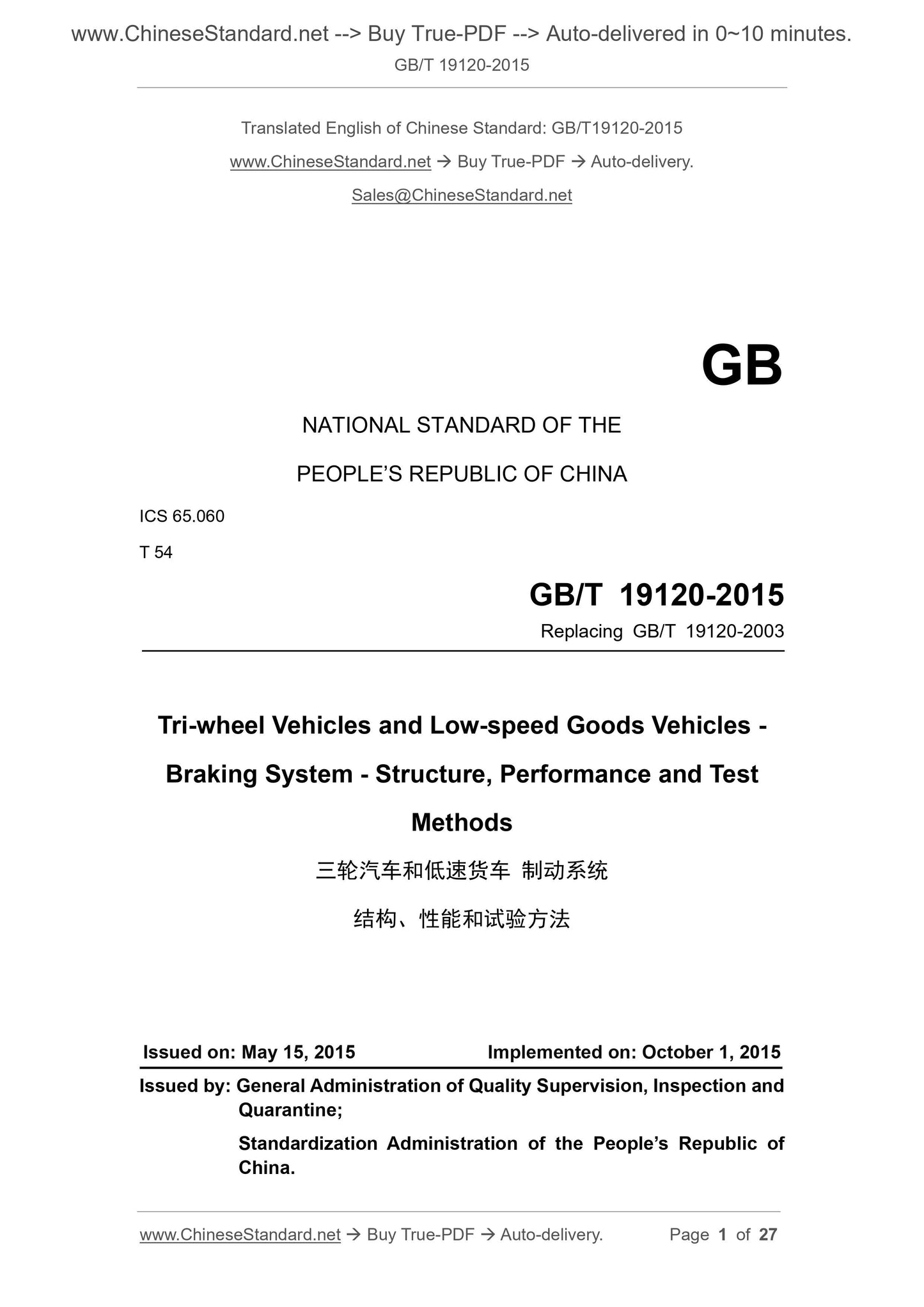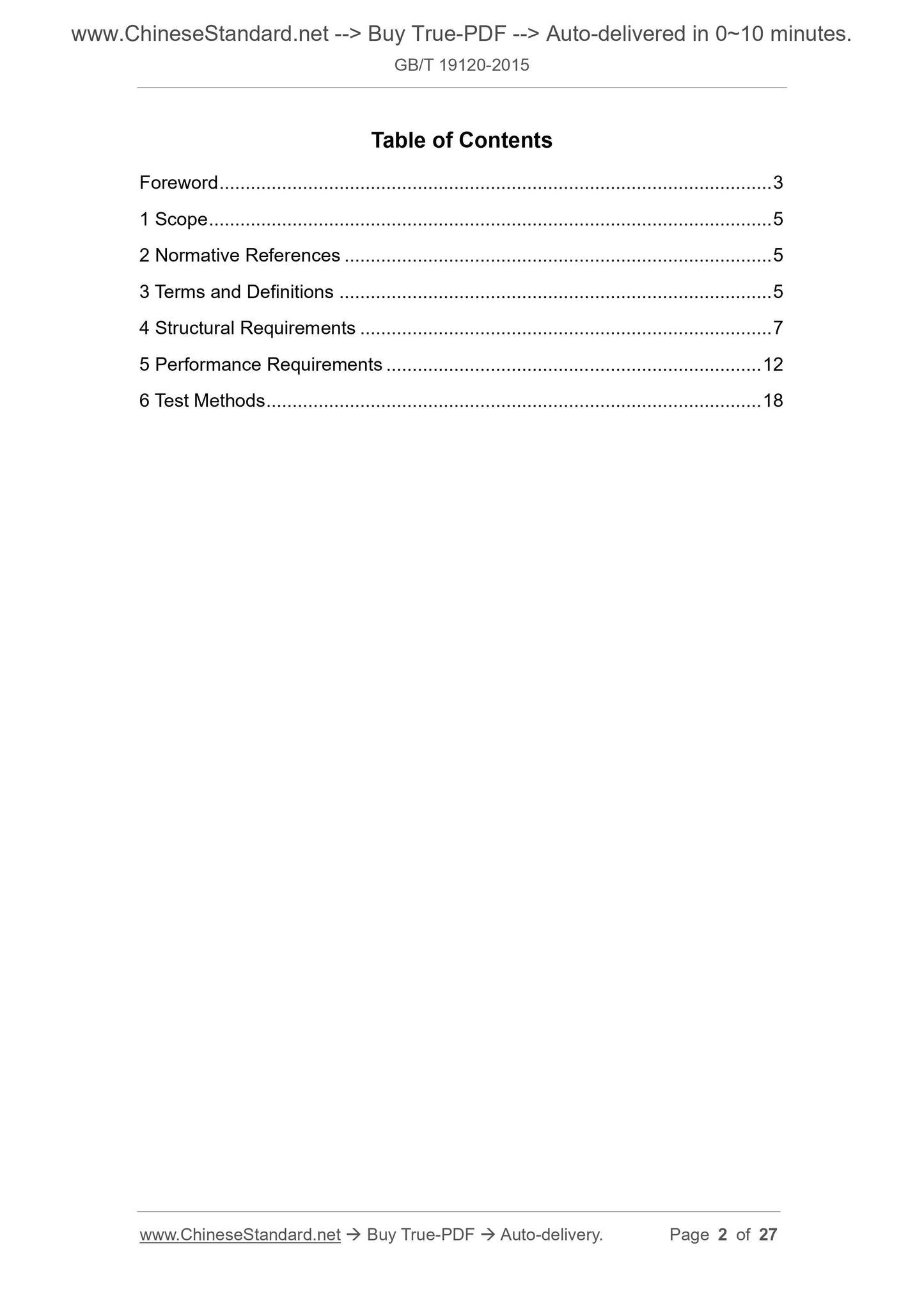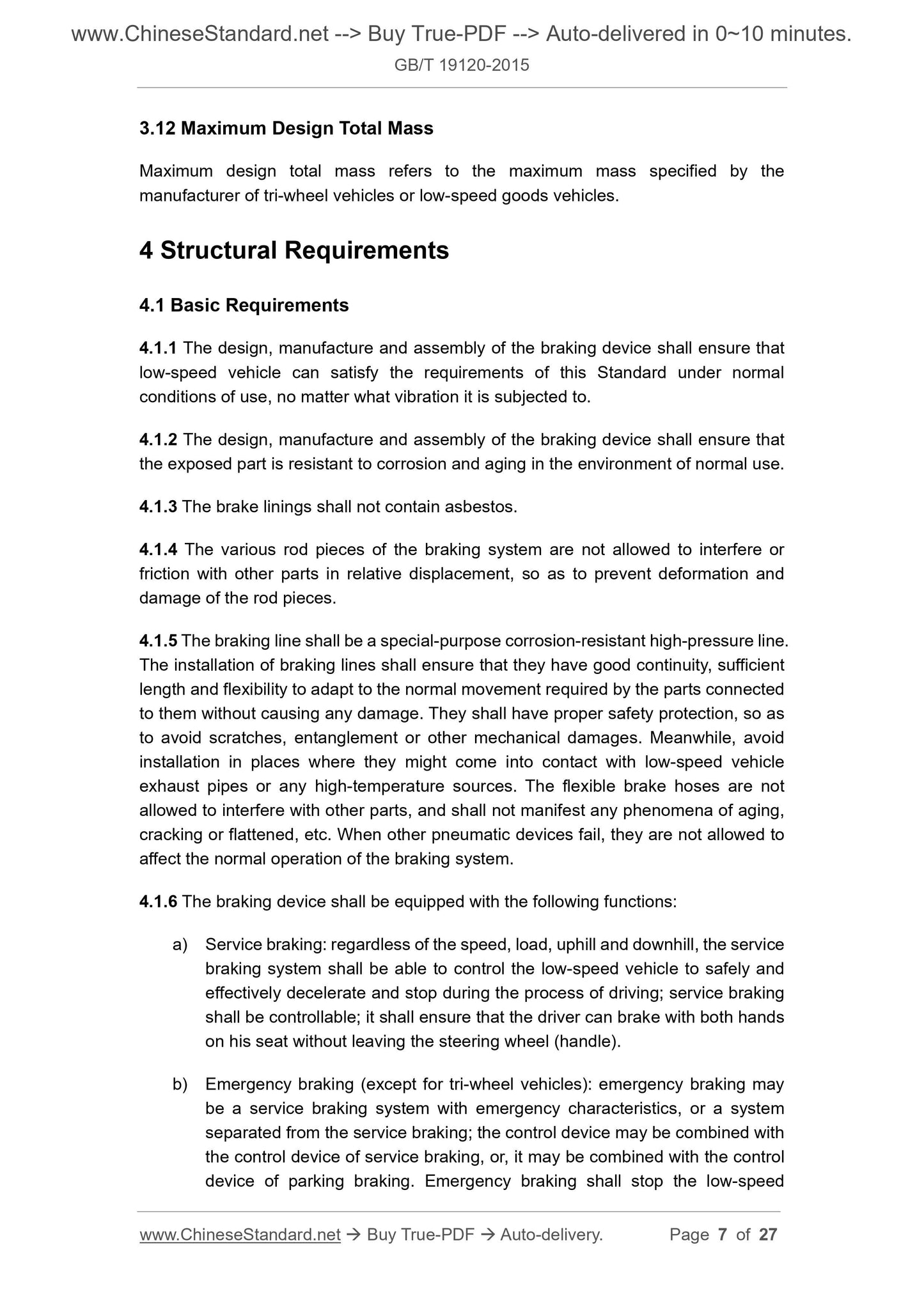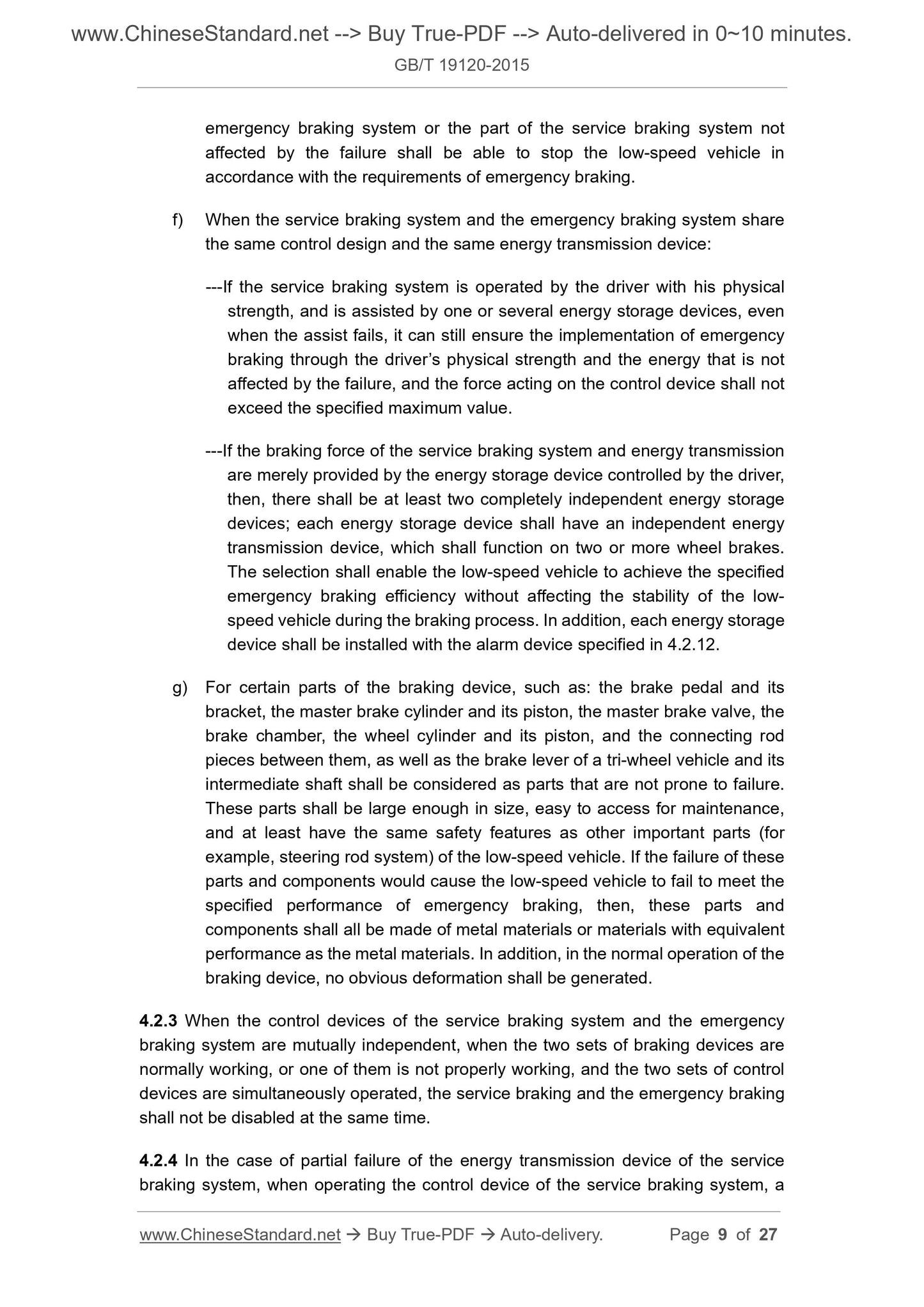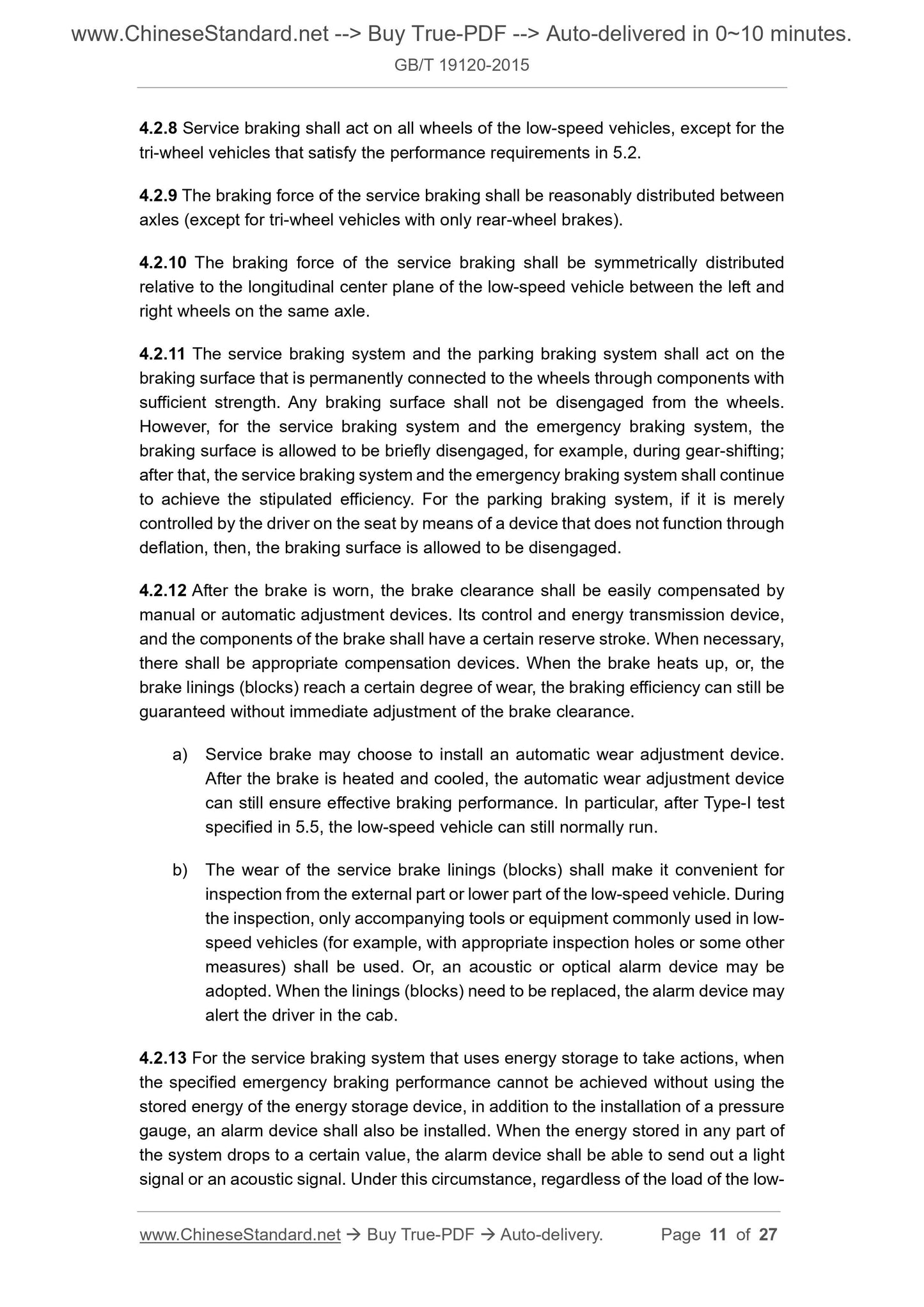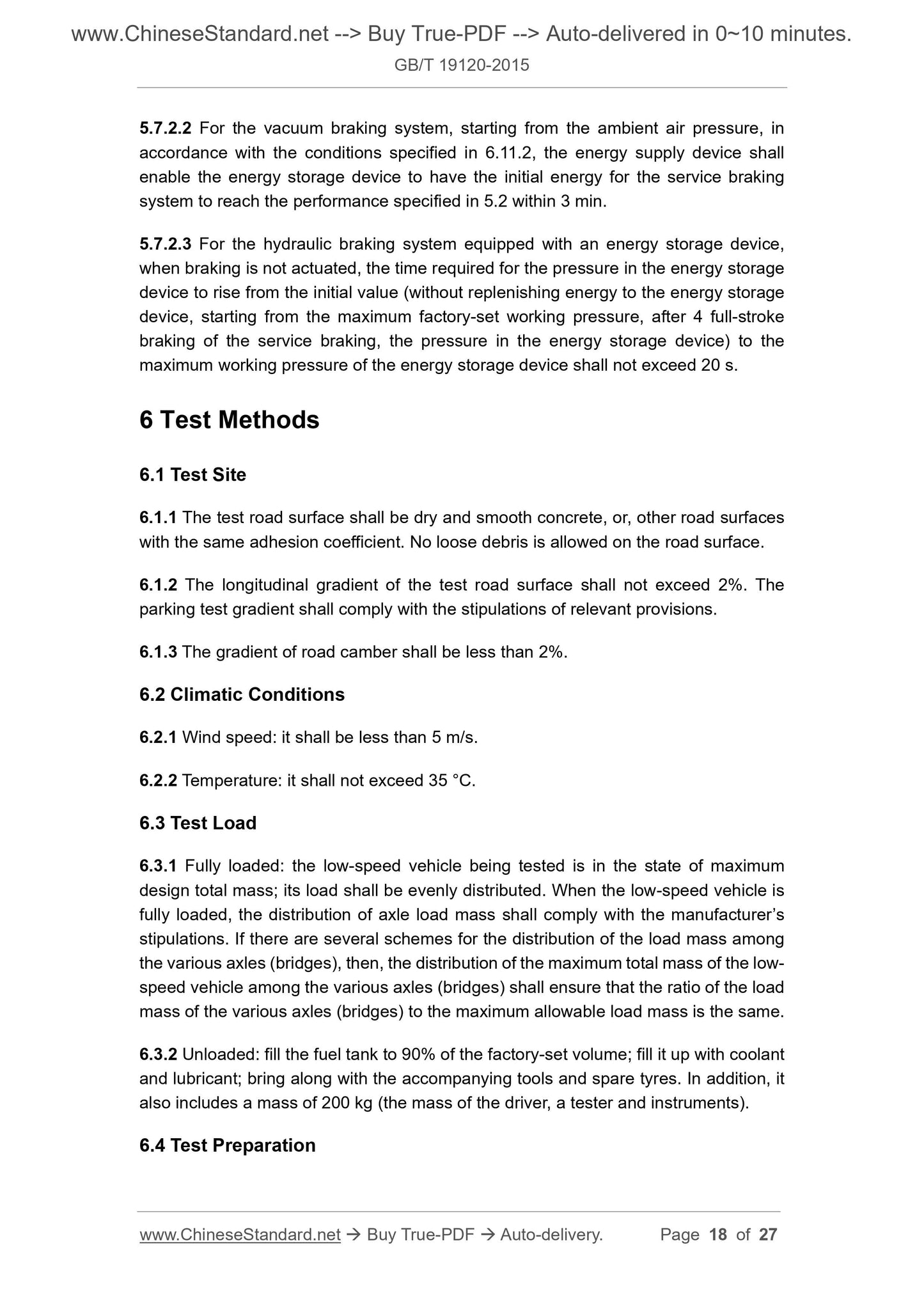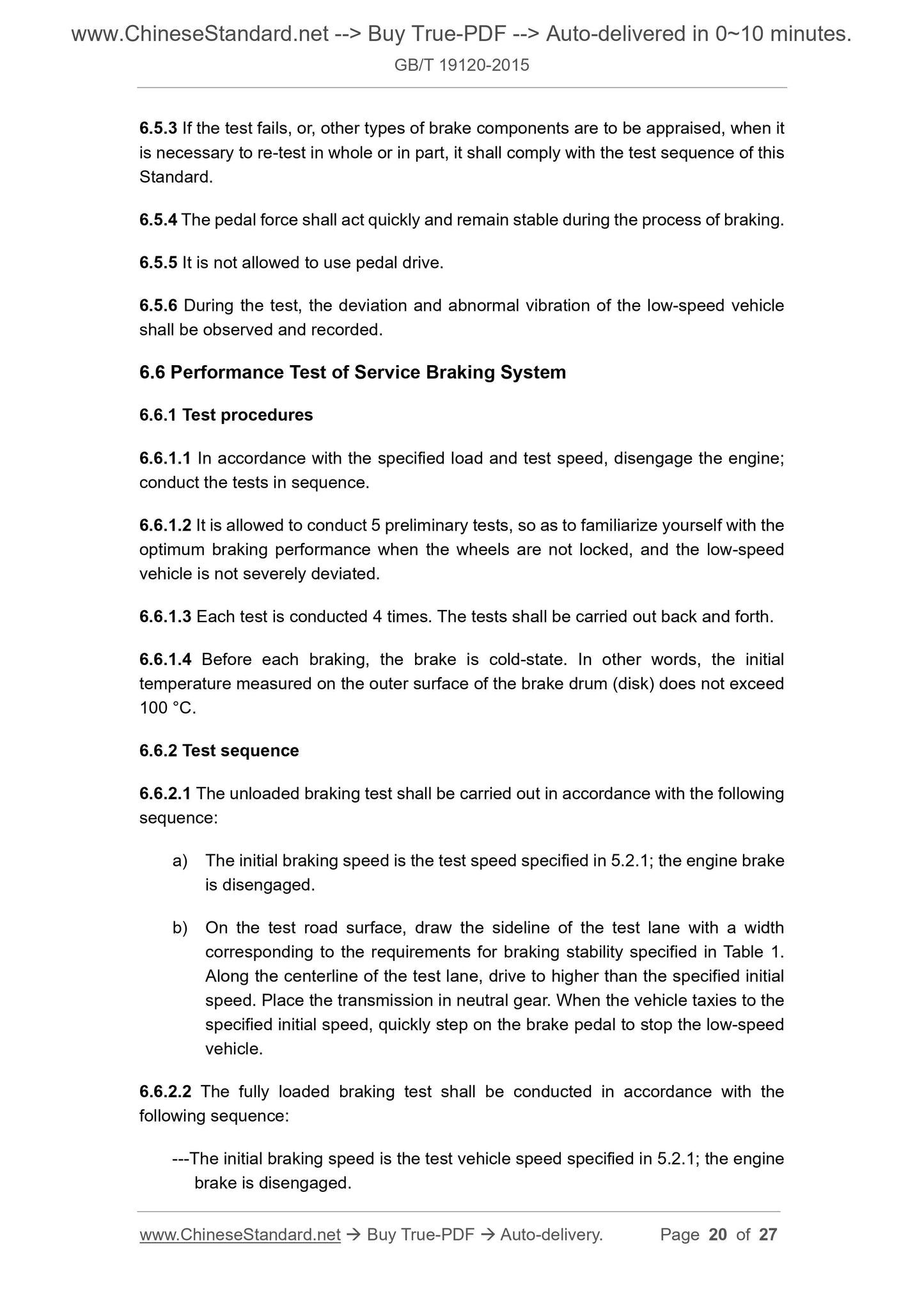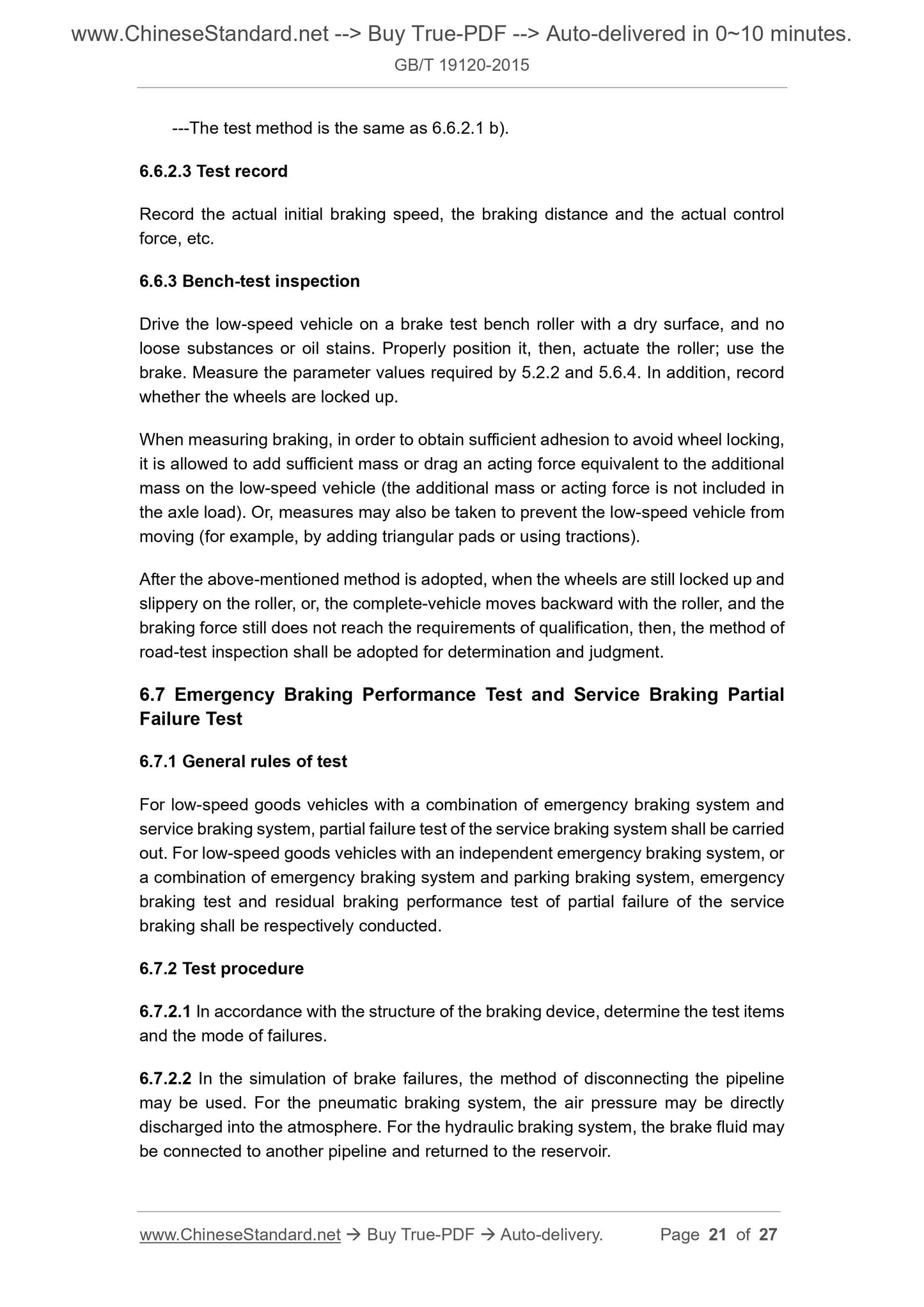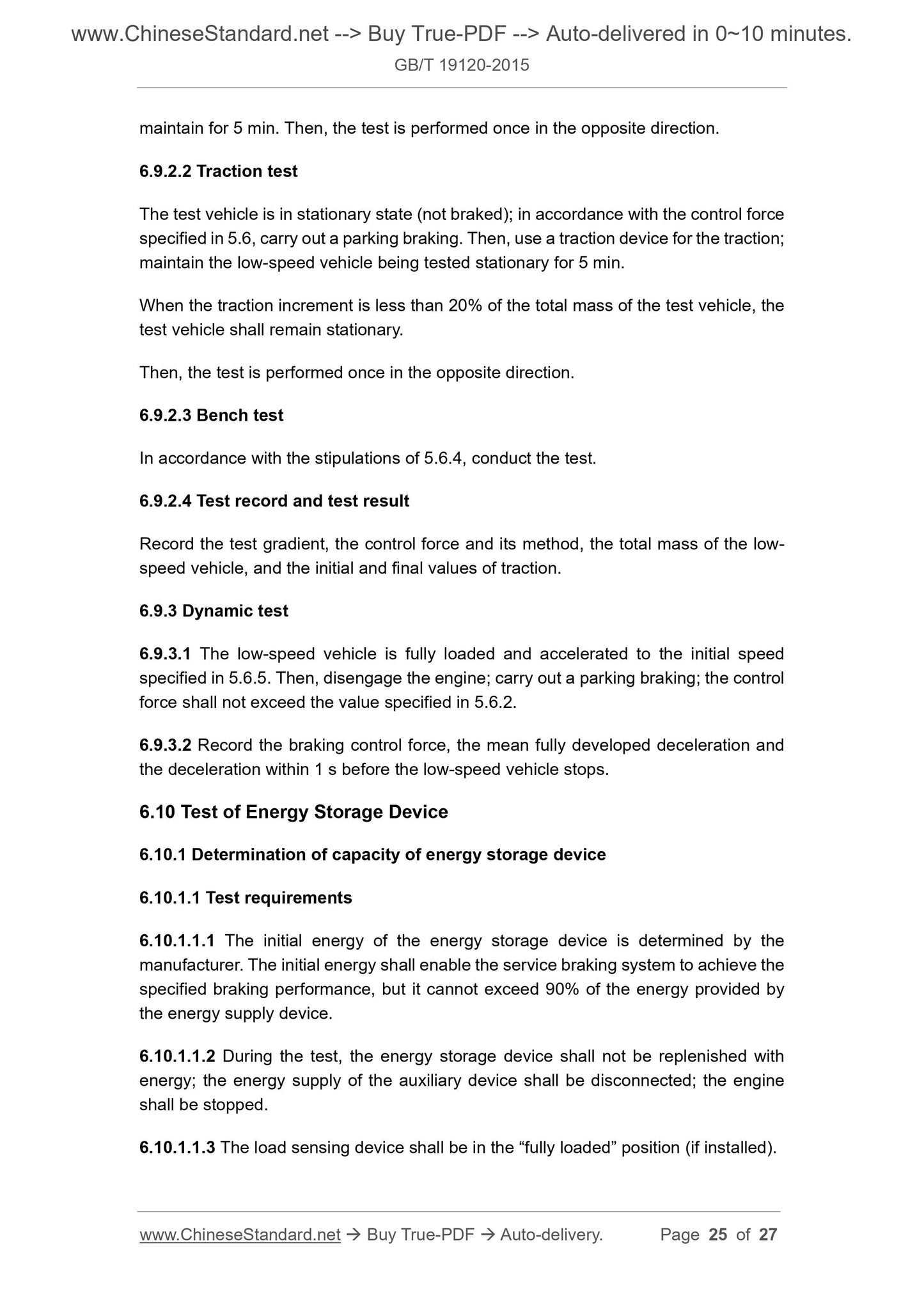1
/
of
10
www.ChineseStandard.us -- Field Test Asia Pte. Ltd.
GB/T 19120-2015 English PDF (GB/T19120-2015)
GB/T 19120-2015 English PDF (GB/T19120-2015)
Regular price
$250.00
Regular price
Sale price
$250.00
Unit price
/
per
Shipping calculated at checkout.
Couldn't load pickup availability
GB/T 19120-2015: Tri-wheel Vehicles and Low-speed Goods Vehicles - Braking System - Structure, Performance and Test Methods
Delivery: 9 seconds. Download (and Email) true-PDF + Invoice.Get Quotation: Click GB/T 19120-2015 (Self-service in 1-minute)
Newer / historical versions: GB/T 19120-2015
Preview True-PDF
Scope
This Standard specifies the structural requirements, performance requirements andtest methods of the braking system of tri-wheel vehicles and low-speed goods vehicles.
This Standard is applicable to the braking system of tri-wheel vehicles and low-speed
goods vehicles (collectively referred to as low-speed vehicles).
Basic Data
| Standard ID | GB/T 19120-2015 (GB/T19120-2015) |
| Description (Translated English) | Tri-wheel Vehicles and Low-speed Goods Vehicles - Braking System - Structure, Performance and Test Methods |
| Sector / Industry | National Standard (Recommended) |
| Classification of Chinese Standard | T54 |
| Classification of International Standard | 65.060 |
| Word Count Estimation | 16,161 |
| Date of Issue | 2015-05-15 |
| Date of Implementation | 2015-10-01 |
| Older Standard (superseded by this standard) | GB/T 19120-2003 |
| Quoted Standard | GB/T 5345 |
| Regulation (derived from) | National Standard Announcement 2015 No. 15 |
| Issuing agency(ies) | General Administration of Quality Supervision, Inspection and Quarantine of the People's Republic of China, Standardization Administration of the People's Republic of China |
| Summary | This Standard specifies the three-wheeled vehicles and low-speed vehicles brake system structural requirements, performance requirements and test methods. This Standard applies to three-wheeled vehicles and low-speed trucks braking system. |
Share
